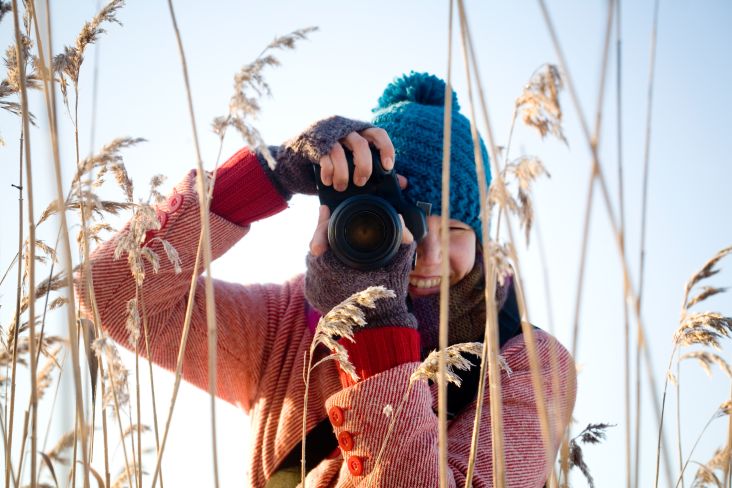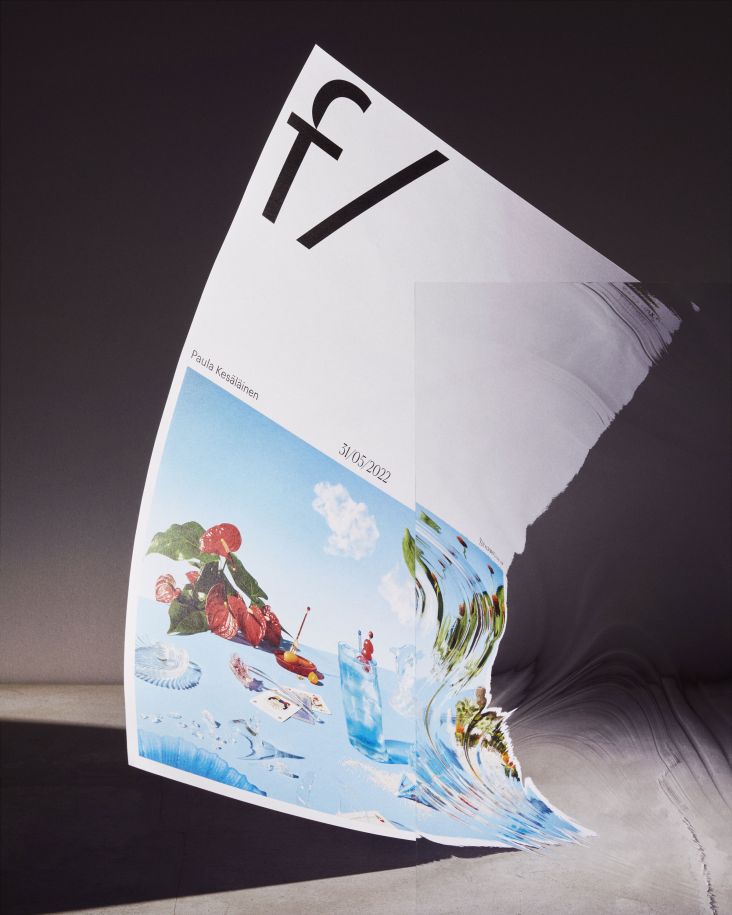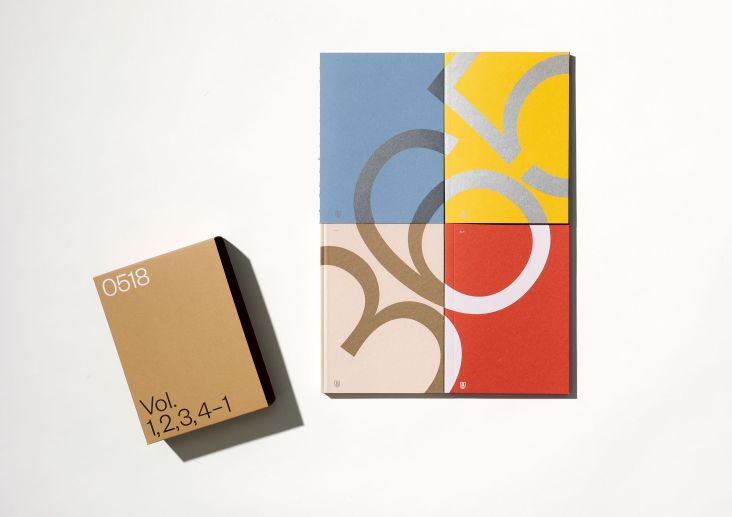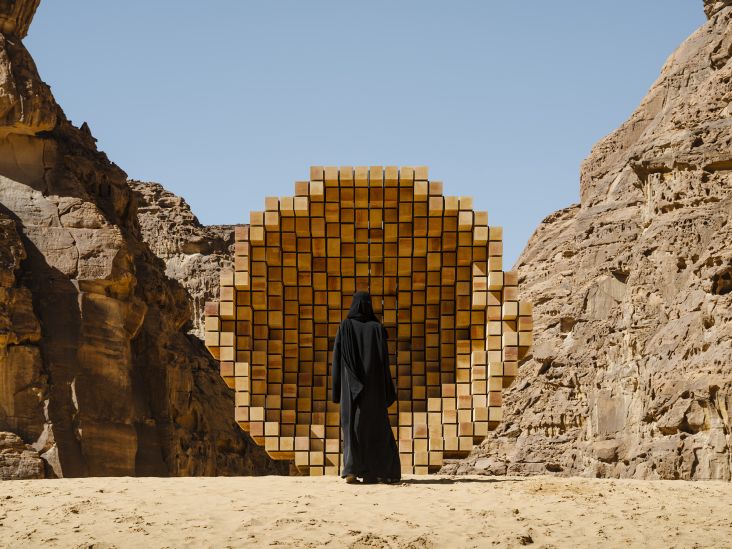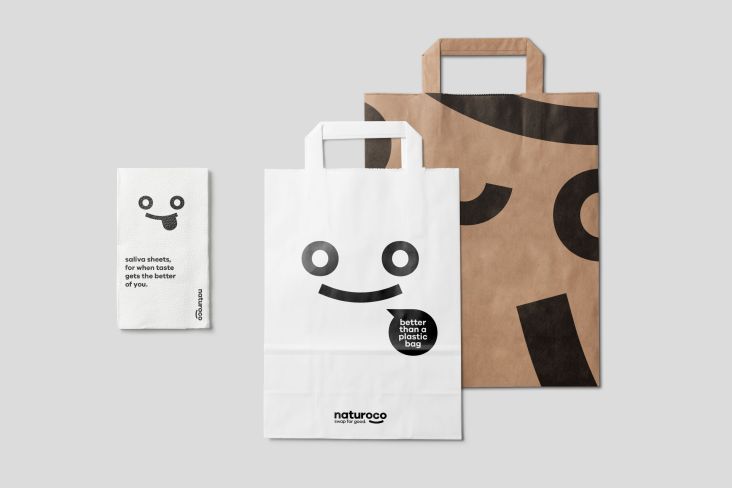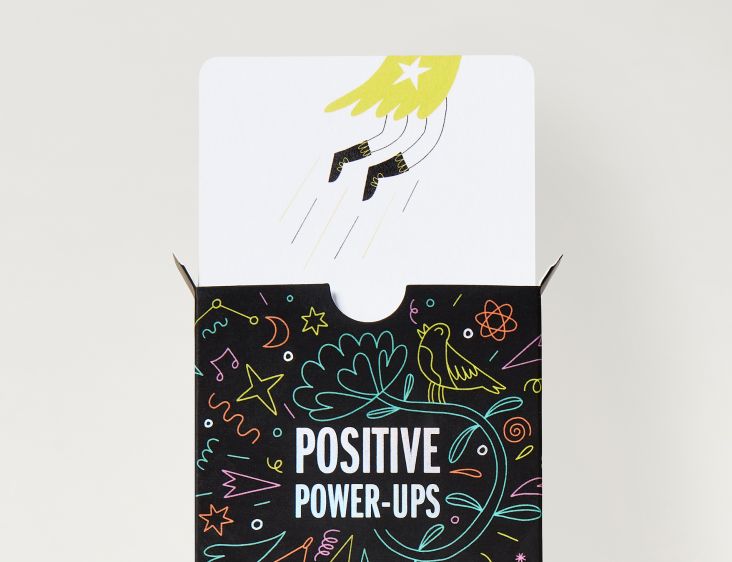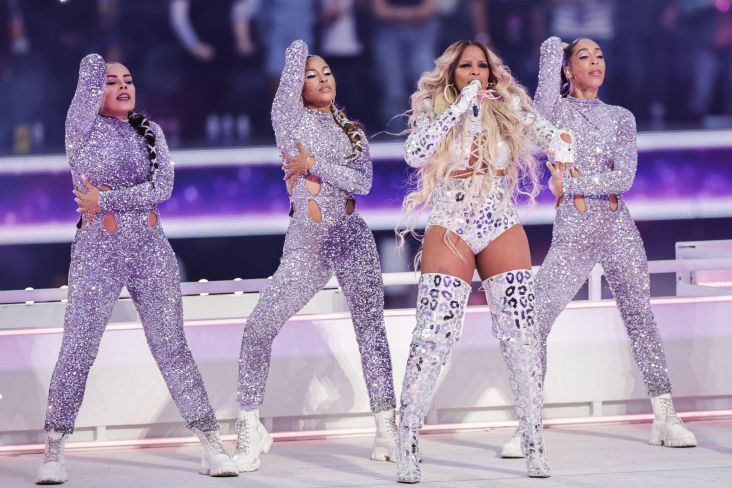Franck Bohbot's photographs of Los Angeles are like stills from a non-existent film
Internationally renowned photographer Franck Bohbot has revisited his Angels project, which sees him photographing the city of Los Angeles in original and surprising ways. Having previously released photos from 2017, the update contains photographs taken between 2017 and 2021 and includes striking images of the city taken during the pandemic.
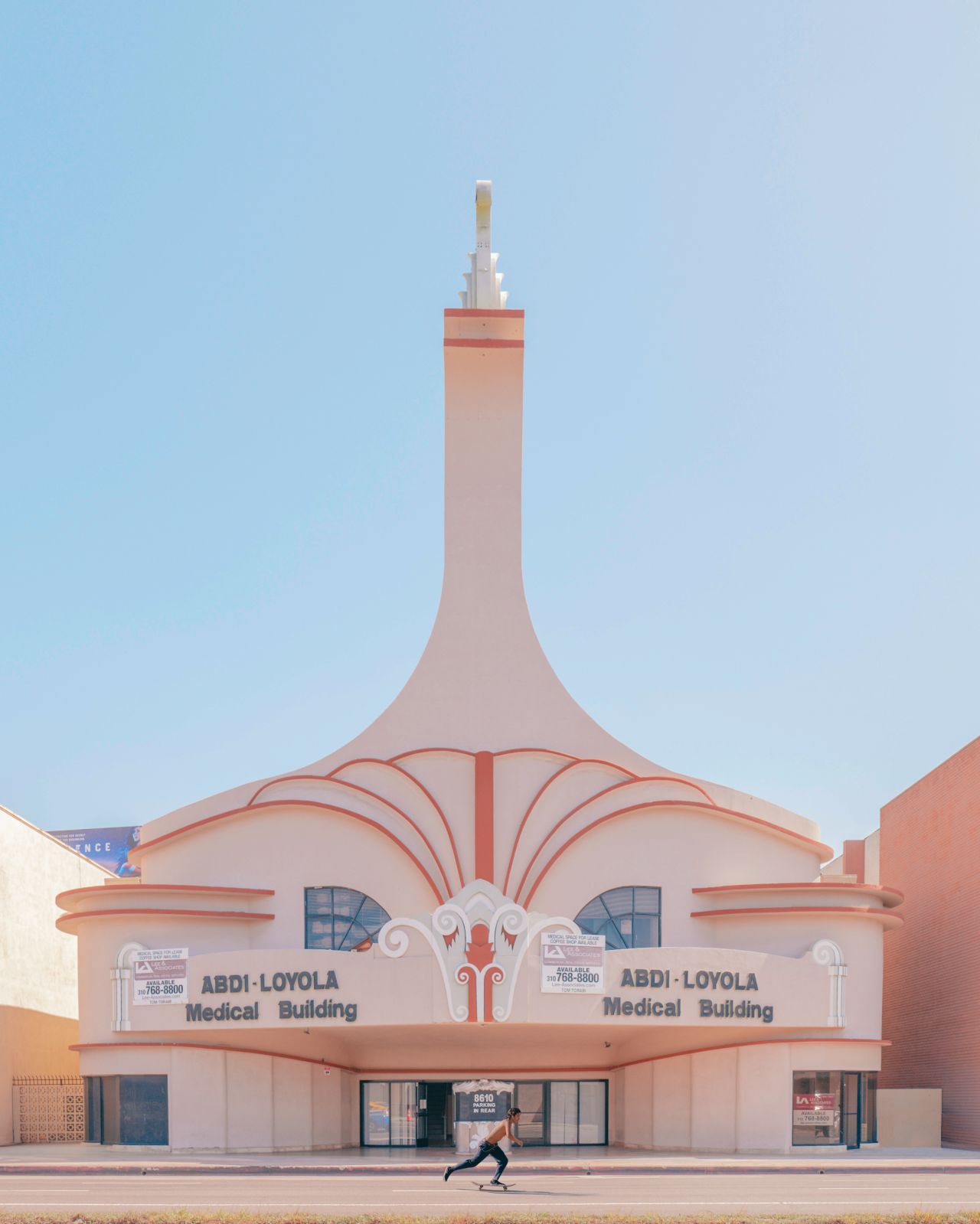
Released on his Behance page, the updated Angels photographs continue Franck's documentation of a city with conflicting and sometimes polarising preconceptions. While to some, it is the city of stars where dreams become a reality, to others LA is a place to live, work, and lead a comparatively everyday life.
For Franck, the city caught his eye and imagination when he explored California with his first daughter Clara and his wife, Katia. Living in New York City at the time, the family headed out to see if they would be interested in moving there. Armed with just his little, discrete Leica Q, Franck originally had no intentions of shooting a photo series, and it was the first time he took snapshot photos on the go without a tripod.
"It was powerful to see how a city can change my way of photographing," Franck tells Creative Boom. In fact, Los Angeles' impact was so profound that he found himself wanting to tell a story through photos, and so the Angels series began. We caught up with Franck to hear how his distance from his subject matter has allowed him to capture images that are like stills from a non-existent film.
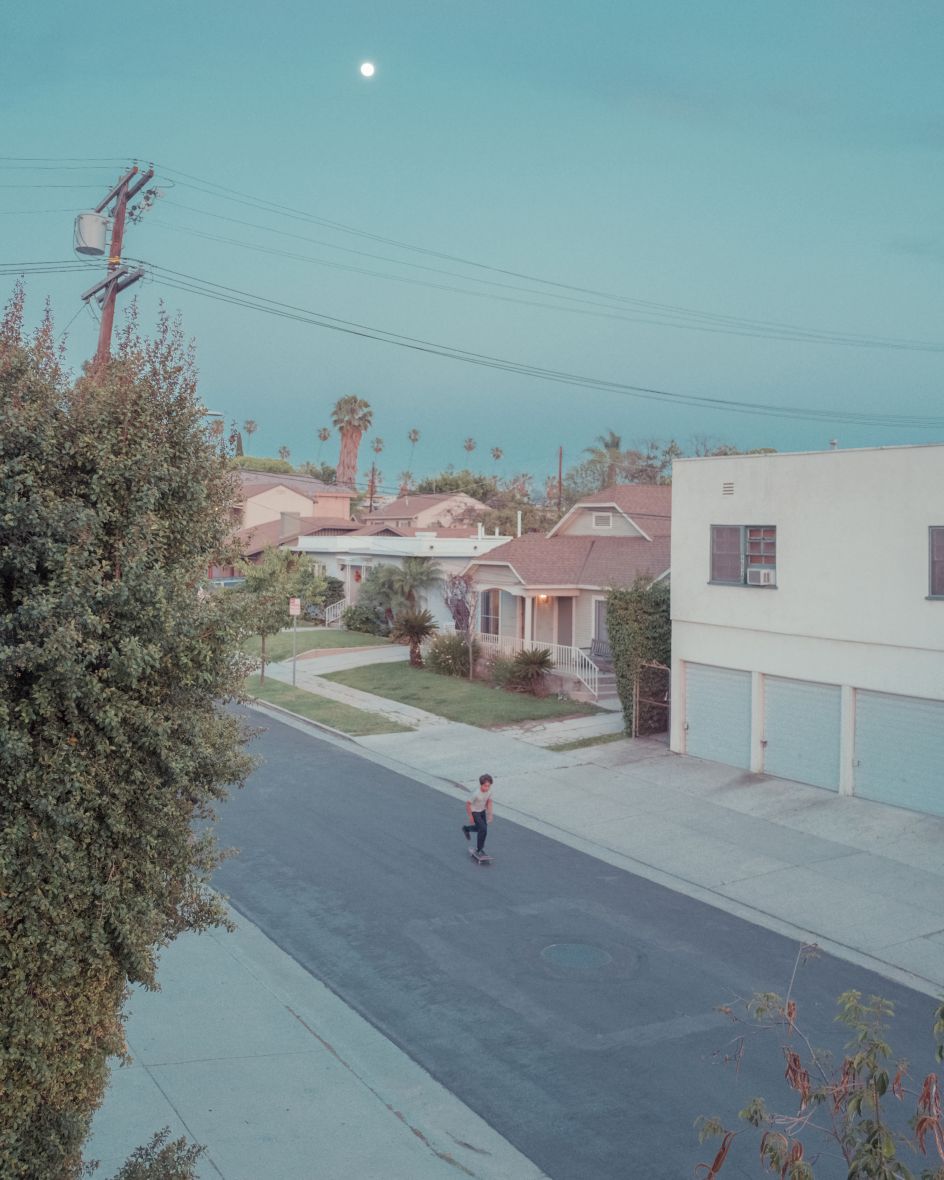
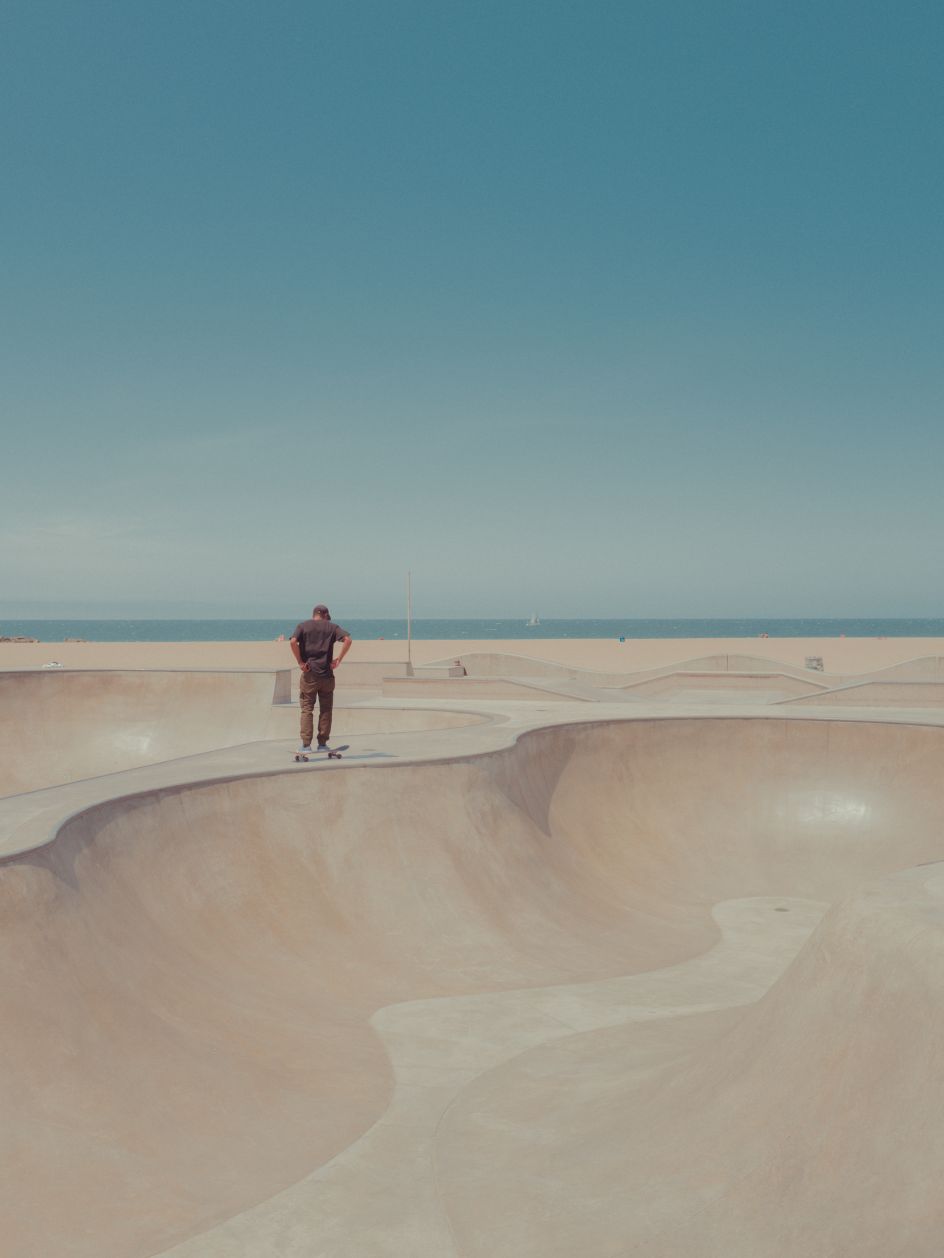
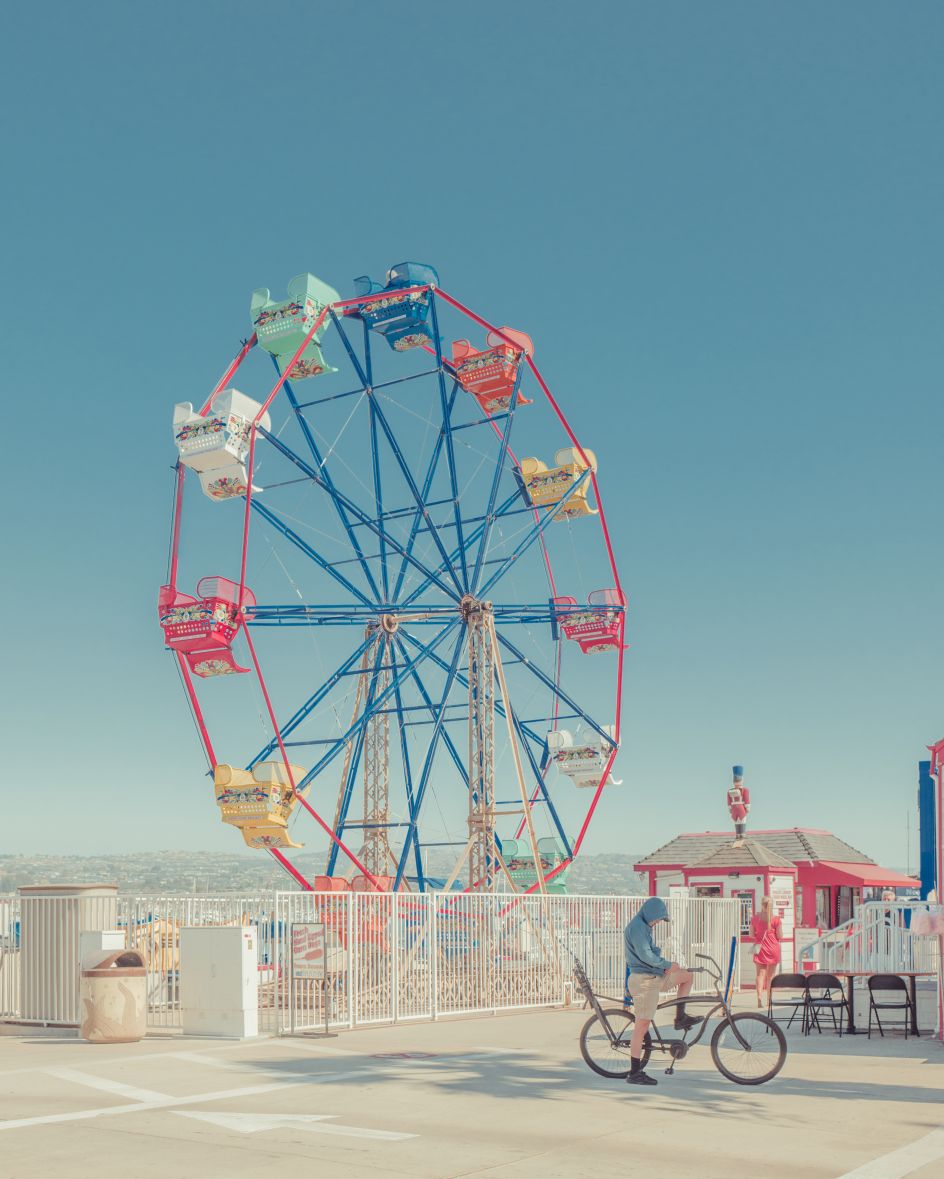
How was Los Angeles different when you first started taking your photos?
Los Angeles is a very interesting city. I don't think it's what most people expect because it's spread out. I see Los Angeles as a region rather than a city. It's like a region with different cities inside it.
I love LA because you can experience different vibes in the same place. The sun, the palm trees, and the beach are all great, but you also have the mountains, the desert, the greedy part, the urban areas, the beautiful parks and the places where movies I love have been shot. All of these spaces are a fantastic playground to create work. It's not easy because there are fewer people in the street than in a city like London, NYC, or Barcelona, but this is what interests me. I can easily isolate a protagonist in my scene and play with the background to focus on the story which the photos give me.
Can you tell us about the pictures you've just released?
I moved to Los Angeles in November 2018, so basically, I wanted to keep shooting. I focused on places, cities, neighbourhoods, events and produced some work in Long Beach, Melrose, Boyle Heights, Beverly Hills, East LA, New Port Beach, Venice Beach, DTLA, and Palm Springs. As I like to shoot at night, I released 'LA Confidential', a project I am still working on, plus a body of work about video games that I am about to finish.
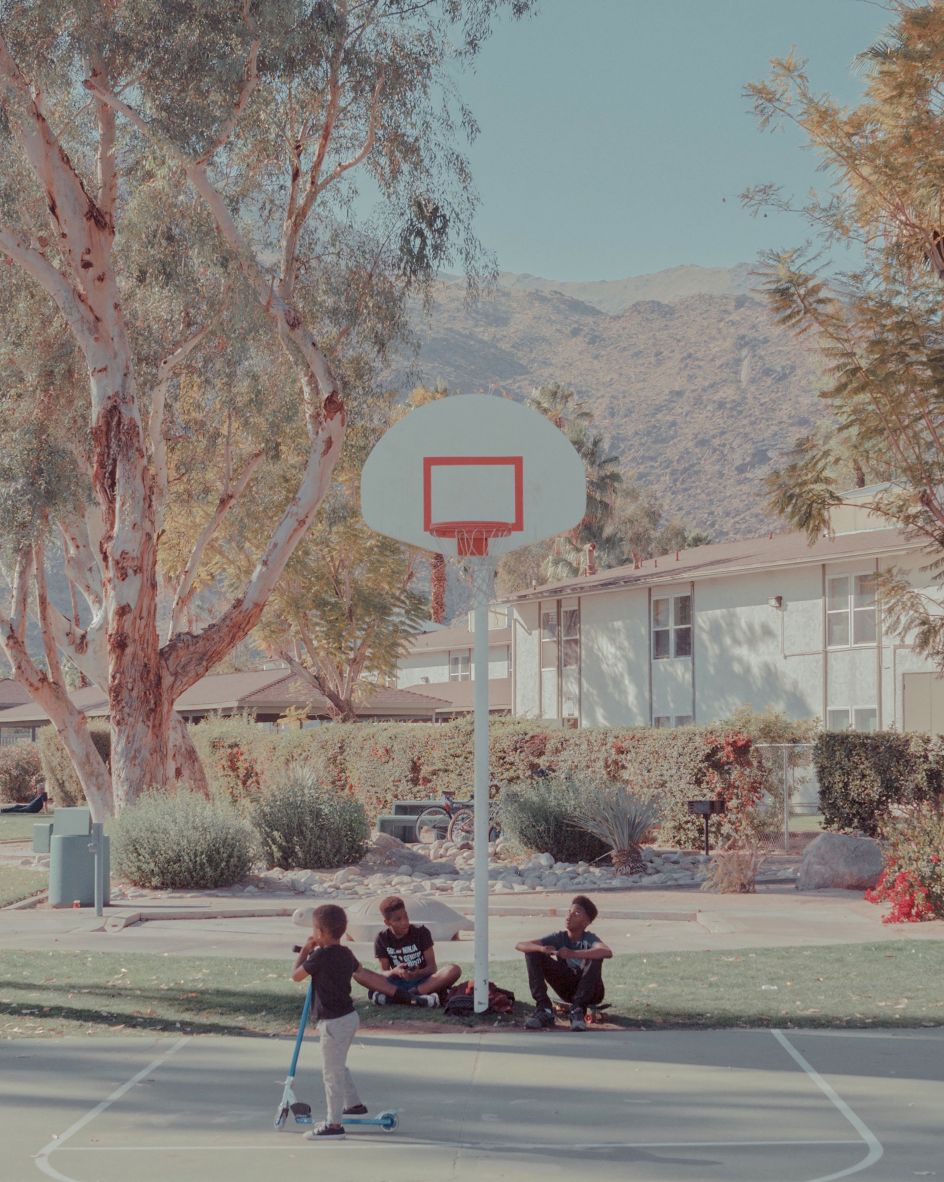
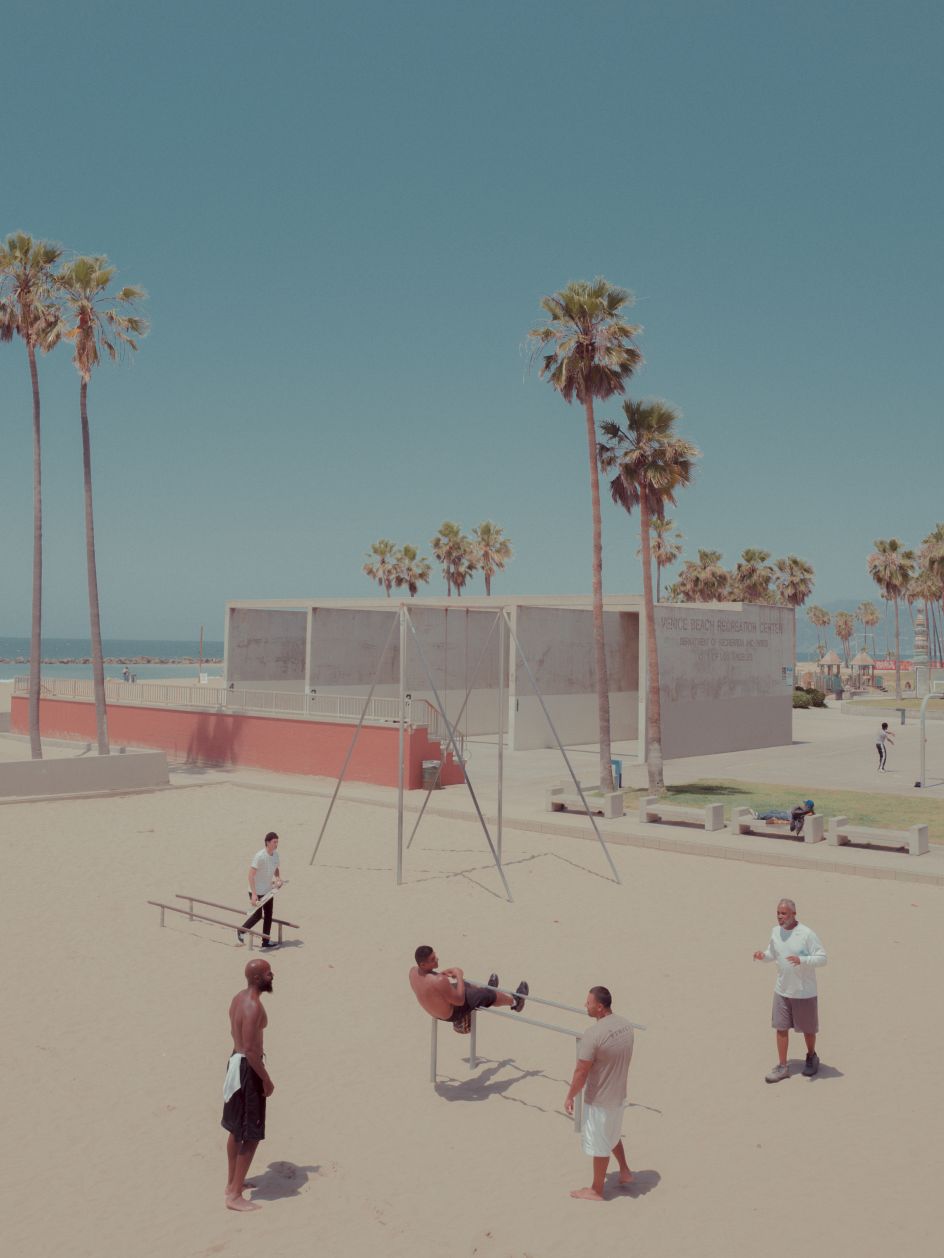
What was it like photographing Los Angeles during the pandemic?
The pandemic was a bit intense. But yes, I took photos mostly in the summer of 2020 in Venice Beach, where I wanted to include a bit of golden light. Even though the colours are predominantly of a cool, blue sky with orange tones, I wanted diversity in all aspects of the project.
You can see some photos with people or even kids with masks on. It is part of our life now, so yes, there is also a little documentary aspect to it. For example, I went to the George Floyd Protest in Hollywood and DTLA, and instinctively I covered the events by shooting it like Angels. Especially when I saw the Hoop bus and all the people around. The energy was so strong that I was like: "This is it, I have to take the shot. Even if I m not a journalist, I am here to observe and create."
Every scene you see is real. The snapshots, compositions, and street photos all capture LA's beautiful, weird, lonely and dreamy world.
Your photos have a wonderful, almost illustrative quality about them. How do you achieve their look?
Thank You! I wanted a look for this series, something very distinct from other street photography that I have seen and love. I wanted to create my own language by being inspired by the movies that I love, the painters I like, and the photographers I admire. By mixing these influences with photography, I have created something fresh and new! Or maybe I should say 'trying to create something fresh and new' because every project is a new study and experimentation. Telling a story with a picture is important to me.
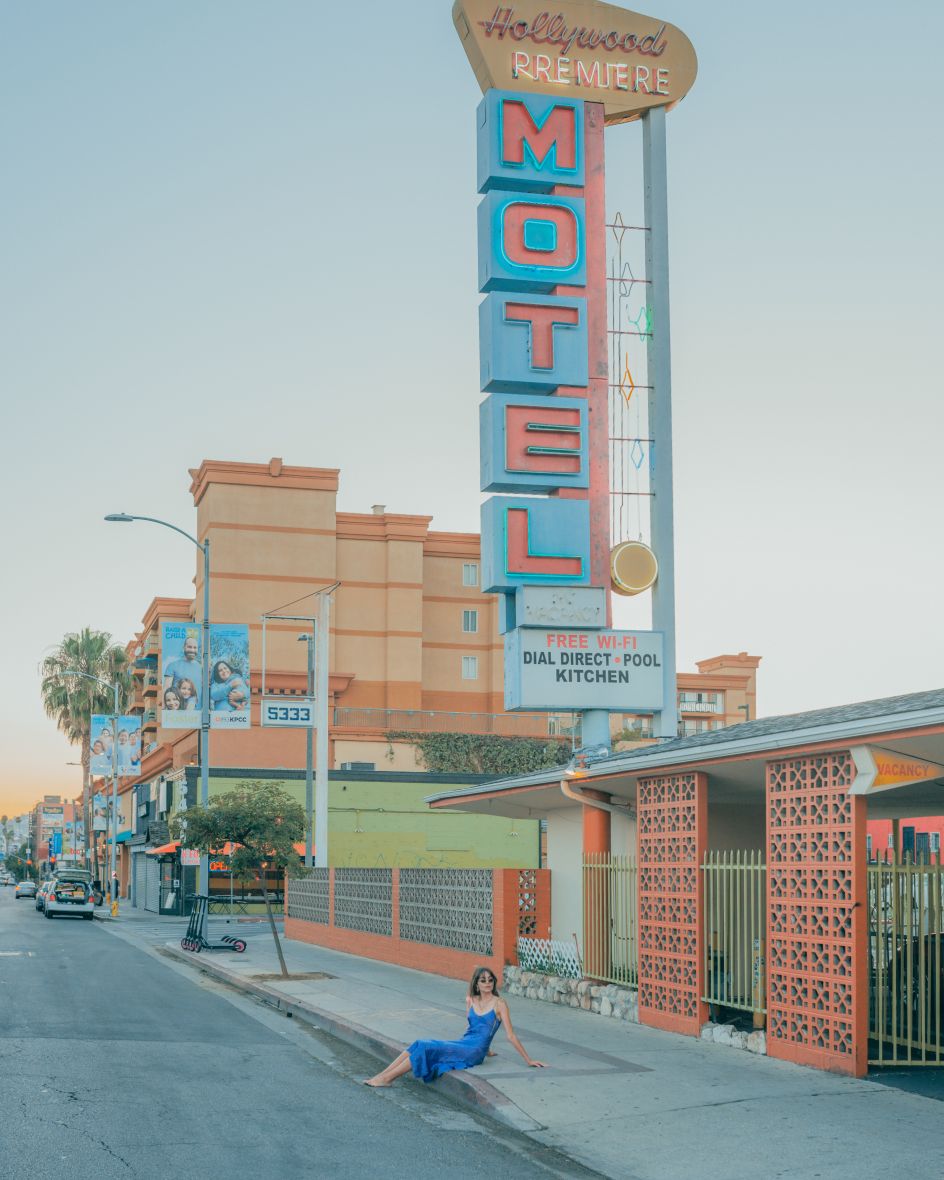
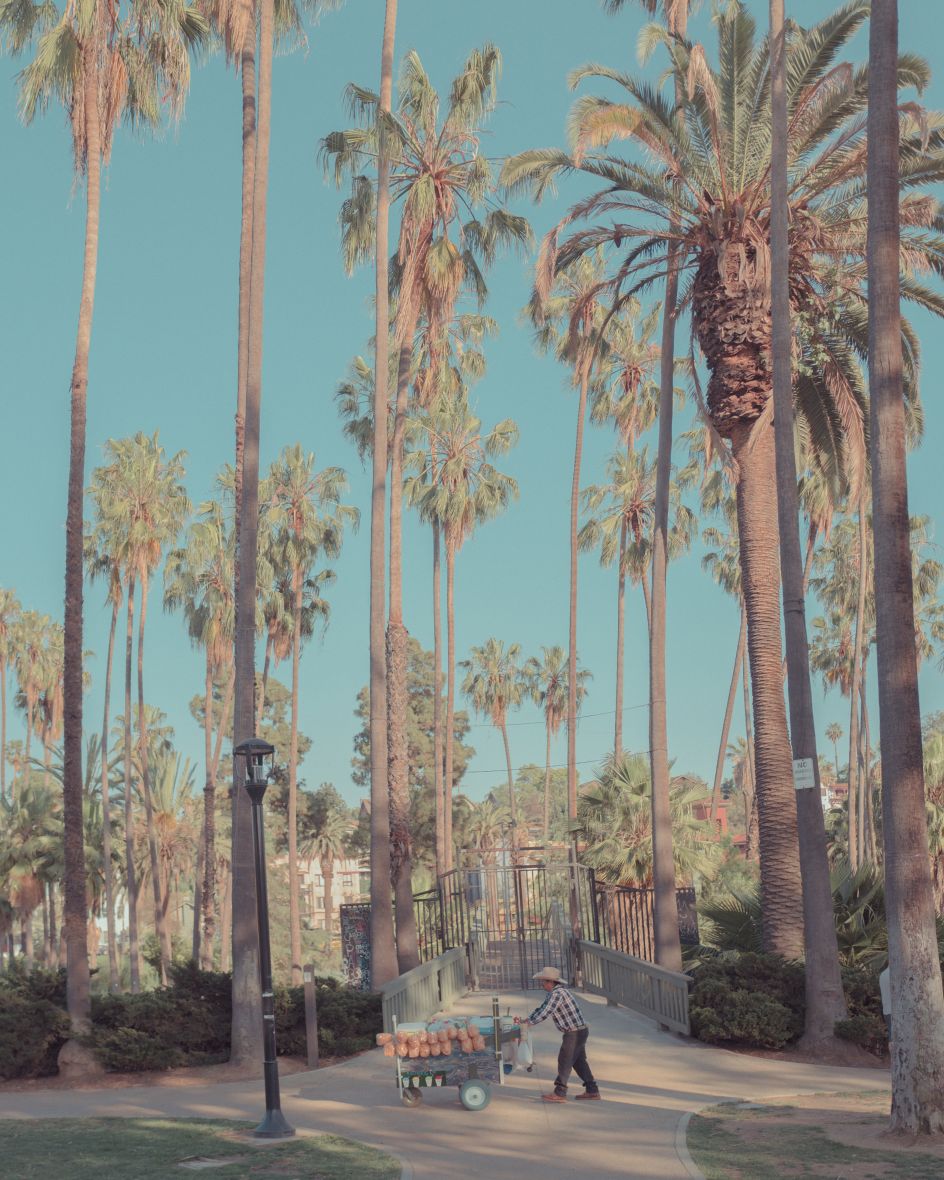
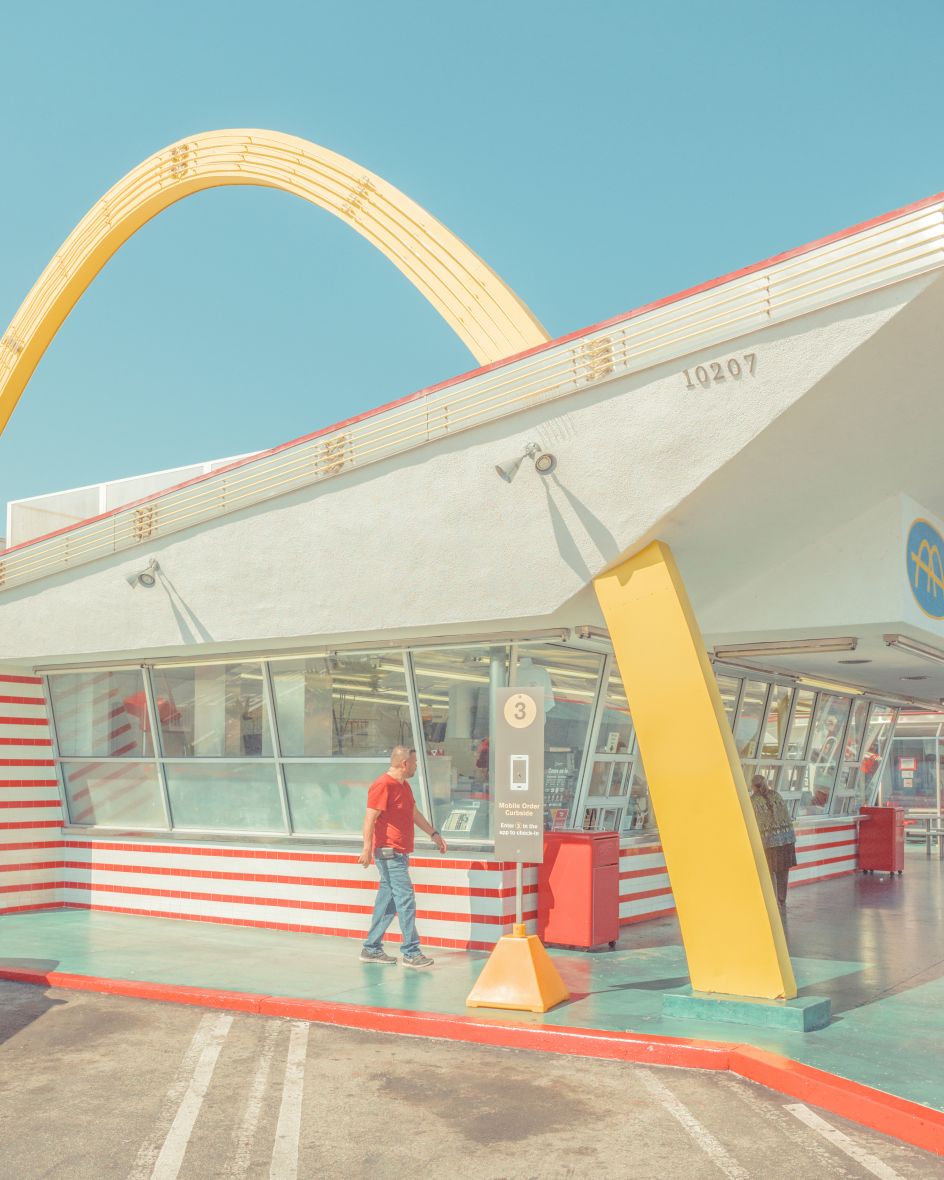
I would say that Angels focuses on the moment, the composition, and the colours. These all help me to tell a story.
I also wanted to include some sky in the series. It refers to the idea that angels are watching the scenes, too, not just you or me.
Angels is also the first series I have dropped as an NFT on Open Sea. Thanks to my collectors, the 25 artworks have sold out before the release. I'm very grateful that the series was made in Web3 as well.
What do you look for when taking a photograph of Los Angeles?
I am from the suburbs of Paris, so for me, I really feel like a tourist in Los Angeles. Even now, especially with the pandemic, it only feels like I have been here for a year.
More seriously, though, almost everyone has some idea of what Los Angeles is, even if they've never been there. Home to Hollywood, the city churns out myth after American myth. Some see the city as a necessary part of a glamorous life - they migrate here to become stars. Kids play at the beach or in the playground, not in the streets. Others live ordinary lives and work ordinary jobs in this city of spectacle. Workers are everywhere.
I look at the everyday people and everyday places. I don't think too much. I shoot with instinct. When I see an interesting scene in front of me, I frame and make the picture.
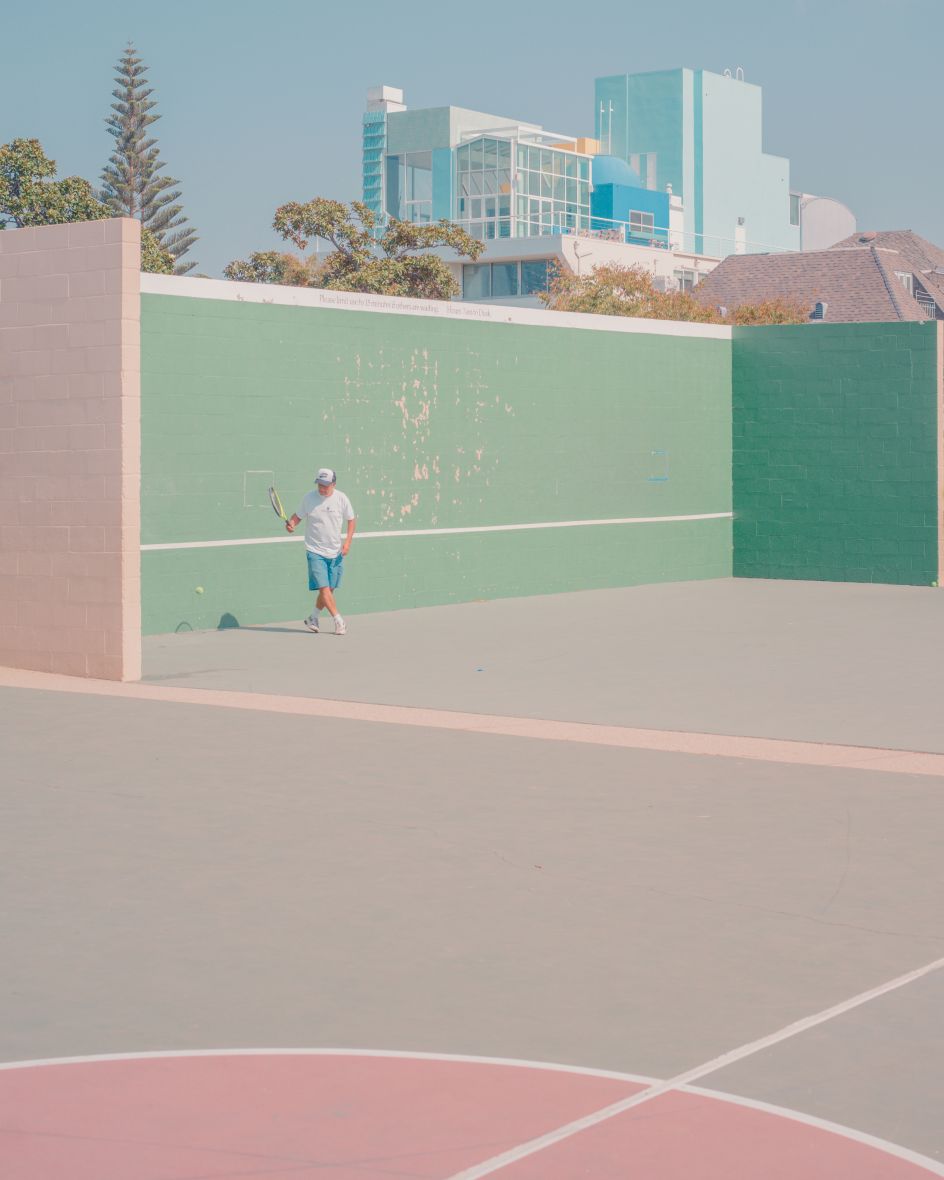
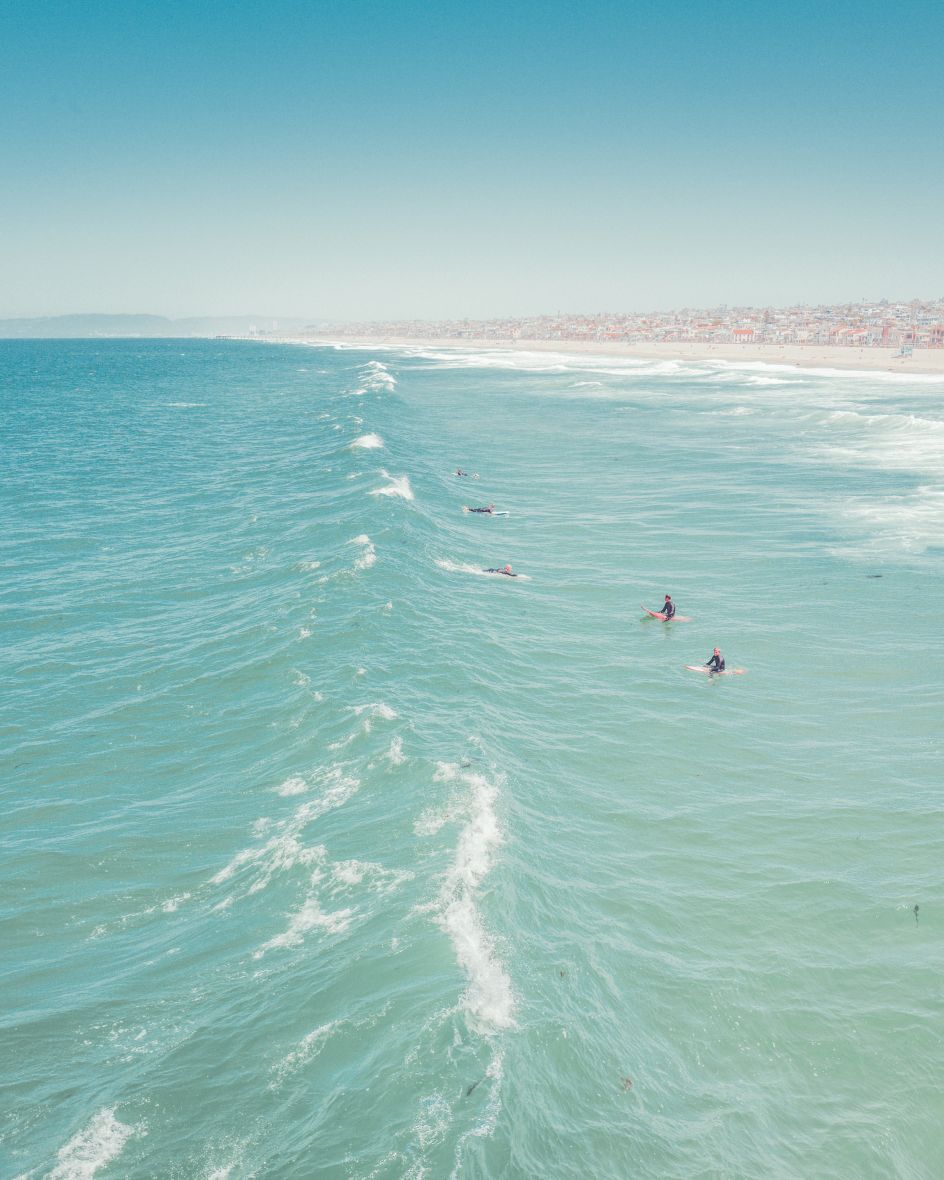
Are there any Los Angeles cliches you aim to avoid in your pictures?
Yes, indeed, but as I say, I really feel like a tourist. For example, the work of David Hockney is fantastic because of the colours, and sometimes it's the cliche of California that brings his vision to life.
For my pictures of Los Angeles, I don't put any limits on myself. When it comes to showing a pool, a palm tree, roller girls, a skateboarder, this is all part of the definition of a way of life too, and I like to have some movie references in my head as well. The only thing I don't show too much in Angels is the sunset.
How has your idea of what Los Angeles is changed over the years you've been photographing it?
Los Angeles is evolving and changing in a bad and good way, like all metropolises. I see more poverty than before, a tragedy of the American dream in downtown LA in Skid Row. The number of homeless people is insane. It's sad. The city started to help them, but the whole state needs to work on this. My good friend Lee Jeffries is the king of documenting homeless people while paying attention to their stories.
I also see more tech companies coming here, which gives the area new energy as it is filled with entrepreneurs. LA is not just the movie capital but a music capital, which is also something I love about the city. I've met many musicians, artists, and people who want to create and find their dream by making their art. I like the energy of that.
I feel there is more freedom in LA than in New York. Maybe this is because you have more space, more light, less stress. But it's still a tough city. I see the city getting more and more expensive as well, which will become a problem for many people.
What's next for the Angels series? Will you do a 2022 collection?
I've already started to photograph during 2022. It's part of my everyday routine. But I am now focusing on another project which I hope to finish soon.
Will I travel to other cities and document them as I have with LA? I've got my eyes on Mexico City, Lisbon, Athens and Bangkok, so yes. Expect more of this treatment in future.

 for Creative Boom](https://www.creativeboom.com/upload/articles/06/063686a9a3b095b9b1f0e95df917ed4bd342be1b_732.jpg)



 using <a href="https://www.ohnotype.co/fonts/obviously" target="_blank">Obviously</a> by Oh No Type Co., Art Director, Brand & Creative—Spotify](https://www.creativeboom.com/upload/articles/6e/6ed31eddc26fa563f213fc76d6993dab9231ffe4_732.jpg)

 by Tüpokompanii](https://www.creativeboom.com/upload/articles/58/58684538770fb5b428dc1882f7a732f153500153_732.jpg)

 for Creative Boom](https://www.creativeboom.com/upload/articles/6b/6bdcef9e04aaf7aab6f3ceb2ed11fdf8a67b8870_732.jpg)





